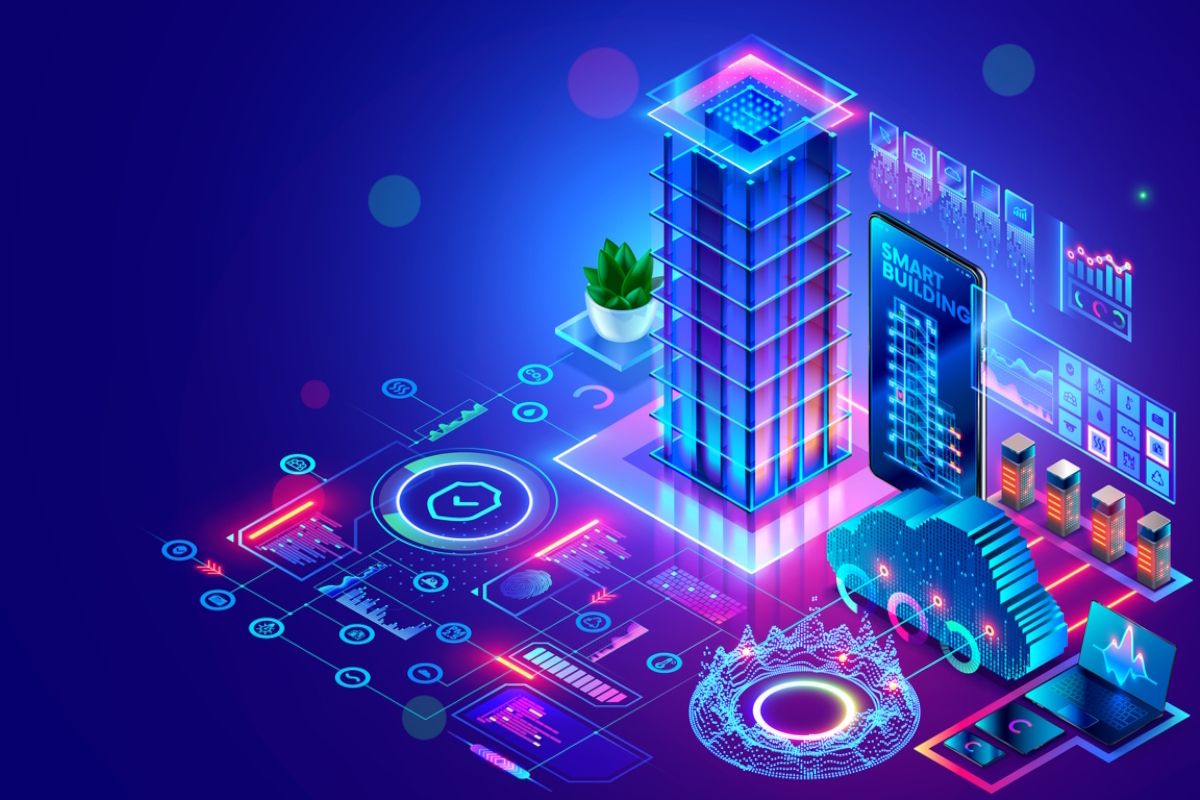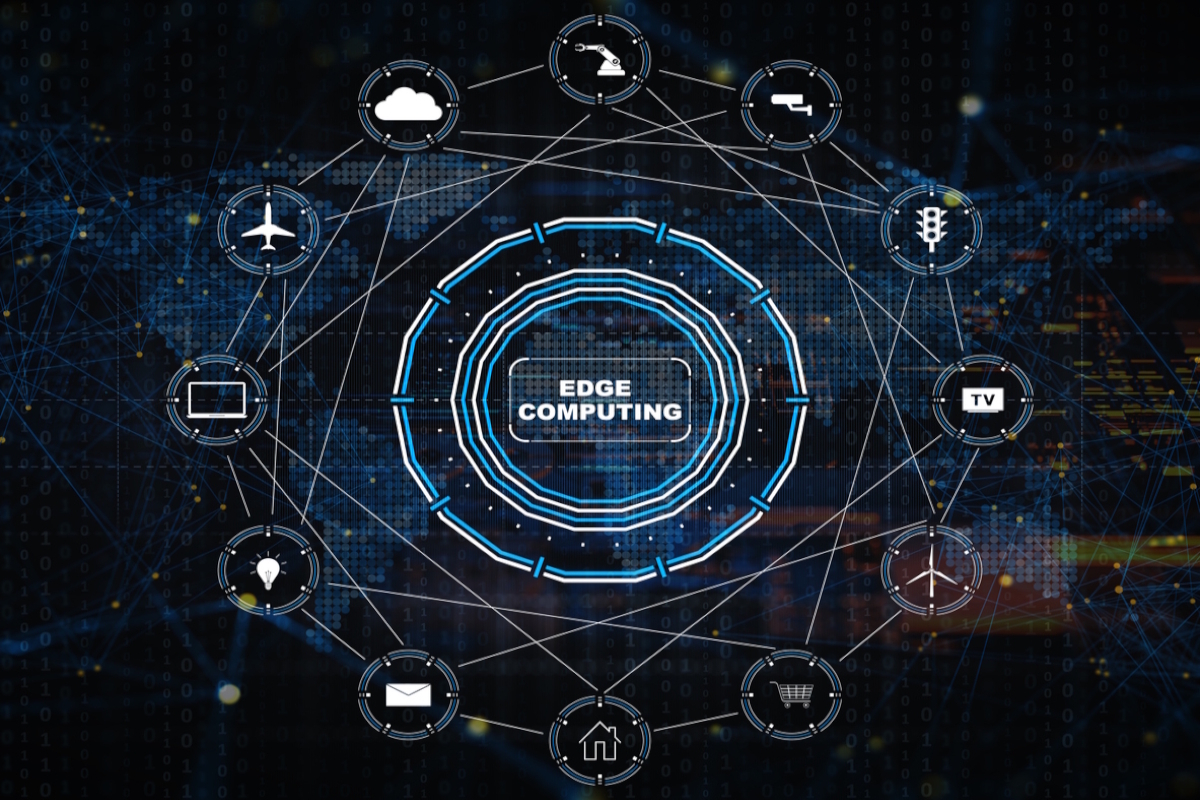Beyond automation: the rise of smart buildings and campuses

Gerard Donohue at Telent describes how data in smart buildings is being leveraged for strategic purposes
Gone are the days of discrete and siloed building management. The modern workplace is a different entity from what it once was, and that is by design. The UK Government and numerous organisations are investing in smart buildings and campuses to meet new demands for security, efficiency, user experience, and sustainability. Reflecting this shift, the global market for smart infrastructure was valued at USD 485.2 billion in 2024 and is projected to reach USD 1.5 Trillion by 2030, growing at a compound annual growth rate (CAGR) of 21.3%.
Smart campuses and buildings are being leveraged strategically, now more than ever, meaning data is constantly being captured through various tools. Using technologies such as cameras, sensors, and connected devices has provided new insight into how people interact with spaces.
What it boils down to is the use of technology to improve workflows, people traffic, user profiles and understanding building usage, in fact, anything that’s connected to a network and can collect data that can be correlated.
Ultimately, these insights help organisations improve user experience, manage resources efficiently and respond to real-time needs; and for some organisations, this is needed more than others.
Smart technology in high security settings
Smart environments have especially impactful applications in high-security institutions such as police stations, prisons, military bases and even universities. These environments can often be relatively cash-constrained and share a need for strict monitoring, efficient space utilisation, and wellbeing, all of which contribute to achieving net zero. This is where smart technology comes in.
In police stations, smart technology is being trialled to support detainee welfare through continuous, non-intrusive monitoring. Sensors can detect over a variety of events including changes in heart rate, breathing patterns and air quality, and signs of physical distress. The focus is on reducing risk in custody suites, where incidents such as self-harm or toxic substance ingestion remain critical concerns. By using real-time data and AI to flag unusual behaviour, these systems help staff intervene earlier and improve care, creating a safer, more responsive custody environment.
Military bases’ core focus is maximising the well-being of personnel. Smart technology is used to improve non-combative scenarios, reducing risk and enhancing efficiency. The intention is to do more with technology, so you don’t have to use people for gate duty and guard duty. For example, the use of automatic number plate recognition (ANPR) detection and artificial intelligence can help detect potential security breaches entering the base, thereby creating safer environments.
Smart campuses, such as universities, also face similar challenges. However, here the focus is on health, well-being, foot traffic, and capacity. Having control of your environment and enabling it to expand and contract based upon known variables will greatly assist in understanding the building fabric’s impact on carbon reduction, a key factor in developing and meeting sustainability targets. Technologies such as sensors and CCTV aligned with AI-driven data analytics can help shape the best use of assets, maximising their use, identifying areas with low footfall and ensuring that building management systems, air conditioning, heating and the like are suitably programmed to meet those needs.
Doing more with less
Across sectors, the push for smart infrastructure is driven by a combination of cost control, sustainability, and a looming workforce crisis.
Many organisations are looking to reduce operational expenses by reducing site visits. With smart technology, the use of artificial intelligence and video analytics enables a one-time inspection that can be shared among others and reviewed remotely, reducing the need for multiple site visits and cutting carbon emissions and costs simultaneously.
Smart infrastructure is valued for its operational efficiency, doing more with less, especially in the telecoms industry, where there is a talent shortage. With over 60% of professionals now over 50 and many nearing retirement, the sector faces an urgent skills gap that smart solutions are addressing.
Smart CCTV systems, for instance, now feature an AI overlay that automatically recognises when something in the field of view has changed, flagging issues proactively before they become problems. Because the technology is operational 24/7, the approach enables scheduling in advance, saving money and minimising human intervention.
Similarly, preventative maintenance is another way to reduce human intervention, as AI-powered systems can continuously monitor devices and only flag when action is needed. This reduced the need for teams to regularly check equipment. Examples of preventative maintenance include:
- Uninterruptible power supplies (UPS): These systems monitor performance in real time to replace only the failing batteries.
- Fire panels in critical rail infrastructure: The process of disabling fire systems during electrical or welding work can be remotely managed, saving organisations significant savings annually by being able to switch systems on and off remotely.
Challenges of deploying smart infrastructure
The biggest constraint is often what’s already there. Many organisations still run on legacy infrastructure, and with limited budgets and competing demands, the cost of upgrading it can be a real barrier.
But ripping everything out isn’t the only option. There are innovative ways to extend the life of existing systems by enabling them with new tech, bridging the gap instead of starting from scratch.
That’s why it’s crucial to understand the infrastructure already in place, and the challenges that come with it, before proposing any solution. Because when it comes to deploying smart infrastructure, cost is often the deciding factor.
There’s also a mindset shift needed. Instead of viewing cost as a sunk expense, it should be seen as an investment in business outcomes: automation, efficiency, and, yes, reducing headcount where it makes sense.
The future of smart buildings and campuses
In five to ten years, there will be very few industries without a smart environment. While human involvement will matter, much of the heavy lifting will be handled by AI and automation.
AI systems designed to operate within clearly defined boundaries will manage environments, flag issues, and make decisions safely and efficiently.
The evolving workplace will increasingly feature more automation, a seamless user experience, and integrated collaboration. Ironically, this could draw people back into physical spaces, as some younger employees who studied during the COVID lockdowns are now showing a preference for in-person collaboration.
Regardless of how preferences shift, smart infrastructure will undoubtedly be the foundation. Smart systems are no longer a futuristic ideology; they are a baseline for making spaces efficient, automating maintenance and enabling hybrid work.
Gerard Donohue is Chief Technology Officer at Telent
Main image courtesy of iStockPhoto.com and Andrey Suslov

Business Reporter Team
Most Viewed
Winston House, 3rd Floor, Units 306-309, 2-4 Dollis Park, London, N3 1HF
23-29 Hendon Lane, London, N3 1RT
020 8349 4363
© 2025, Lyonsdown Limited. Business Reporter® is a registered trademark of Lyonsdown Ltd. VAT registration number: 830519543





